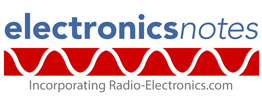Home » Component data » MOSFET data » this page
IPA082N10NF2S MOSFET Data
Data for the IPA082N10NF2S power MOSFET including electrical parameters, maximum current and voltage, pin connections, package type and many other datasheet details.
The IPA082N10NF2S is one of Infineon's StrongIRFET series of power transistors offering a high level of performance and a maximum voltage of 100V and current of 46A.
Key details and performance parameters for the IPA082N10NF2S MOSFET.
| IPA082N10NF2S power MOSFET datasheet parameters & data |
|
|---|---|
| Parameters | Details |
| Brief description | 100V 46A power MOSFET |
| Package type | TO220 |
| Operational mode | Enhancement |
| Channel type | N channel |
| Drain to Source voltage VDSS | 100V |
| Gate to source voltage VGS | -20V to +20V |
| Maximum drain current continuous ID | 46A |
| Maximum drain current pulsed ID | 184A |
| Zero gate voltage drain current IDSS | 0.1µA typ, 1.0µA max for VDS = 100V, VGS = 0V at 25° C 10µA typ, 100µA max for VDS = 100V, VGS = 0V at 125° C |
| Gate threshold voltage VGS(th) | 2.2V min, 3.0V typ, 3.8V max with VDS = VGS and ID = 46A |
| Static drain source ON resistance RDS(ON) | 7.3mΩ typ, 8.2Ω max for VGS = 10V and ID = 30A 8.9mΩ typ, 10.3Ω max for VGS = 16V and ID = 15A |
| Forward transconductance gFS | 31 min |
| Input capacitance | 2000pF typ |
| Output capacitance | 320pF typ |
| TJ °C | 15pF typ |
| PTOT mW | 35W |
| Primary manufacturer | Infineon |
Outlines & pinout:
Explanation of MOSFET parameters
| Parameter | Explanation |
|---|---|
| Operational mode | This details whether the FET is an enhancement or depletion mode |
| Channel type | The channel of the MOSFET can either be an N-type channel where electrons are the majority carriers or P-type where holes are the majority current carrier. |
| Drain to Source voltage VDSS | This is the maximum voltage that can be sustained between the drain and source |
| Gate to source voltage VGSS | This is the maximum voltage that can be sustained between the drain and the gate. |
| Maximum drain current continuous ID | This is the maximum current that can be carried byt he device. Sometimes there may be a differentiation between the continuous and pulsed or peak values |
| Parameter | Explanation |
|---|---|
| Zero gate voltage drain current IDSS | This is the current carried by the device when the gate voltage is zero. The test conditions are normally stated for this. |
| Gate threshold voltage VGS(th) | This is the minimum gate-to-source voltage, VGS required to create a conductive channel between the source and drain terminals |
| Static drain source ON resistance RDS(ON) | This is the resistance of the device when turned on. The test conditions of voltage and current are normally given for this. |
| Drain source ON voltage VDS(ON) | This is the voltage across the device when it is turned on. Again the test conditions are given. |
| Forward transconductance gFS | Forward transconductance also given the letters gm is defined as the change in drain current (ΔID) for a small change in the gate-source voltage ΔVGS, with the drain-source voltage, VDS held constant. |
These are the main MOSFET parameters that have been included in our list. There are others, but these are the main ones and they help quantify the main elements of the performance.
Please note, that the data given is the best estimate we can give within a tabulated summary of this nature. Parameters also vary between manufacturers. Electronics Notes cannot accept any responsibility for errors, inaccuracies, etc, although we do endevaour to ensure the data is as accurate as possible.
Notes and supplementary information
• Availability & sources
The IPA082N10NF2S is available from a number of stockists and electronic component distributors many of which are given in the table below.
IPA082N10NF2S Component Distributor, Stock and Pricing
• Notable features
The IPA082N10NF2S is an N-channel StrongIRFET™ 2 power MOSFET optimized for high-efficiency switching in 100 V applications, combining ultra-low on-resistance with robust thermal and avalanche performance.
Ultra-Low On-Resistance : RDS(on) maximum of 8.2 mΩ at VGS = 10 V, minimizing conduction losses in high-current designs.
High Continuous Drain Current : 46 A at TC = 25°C, supporting demanding power handling up to 35 W dissipation.
Low Gate Charge : Total QG of 28 nC typical, enabling faster switching and reduced driver power requirements.
100% Avalanche Tested : Single-pulse avalanche energy of 80 mJ, ensuring reliability in inductive load applications.
Extended Temperature Range : Operates from -55°C to 175°C, ideal for harsh industrial and automotive environments.
JEDEC Qualified : Meets rigorous standards for quality and reliability, with Pb-free and RoHS compliance.
Fast Switching Speeds : Turn-on delay of 11 ns and fall time of 5 ns typical, supporting high-frequency operation.
Robust TO-220 FullPAK Package : Through-hole design with low thermal resistance (4.3 °C/W junction-to-case) for easy heatsinking.
• Typical applications summary
| Application Category | Typical Use Case | Device Feature Utilised |
|---|---|---|
| Switching Mode Power Supplies (SMPS) | Synchronous rectification in adapters and chargers. | Ultra-low RDS(on) (8.2 mΩ) for minimized conduction losses. |
| Motor Drives | Half-bridge switching in BLDC motor controls. | High avalanche energy (80 mJ) and 46 A current rating for inductive loads. |
| Battery Management Systems (BMS) | Load switches and cell balancing in EV batteries. | Extended temperature range (-55°C to 175°C) for reliable operation. |
| LED Lighting Drivers | Constant-current sources in high-power LED arrays. | Low gate charge (28 nC) for efficient PWM dimming. |
| Industrial Power Supplies | DC-DC converters in servers and telecom equipment. | Fast switching times (t_on = 11 ns) for high-frequency designs. |
 Written by Ian Poole .
Written by Ian Poole .
Experienced electronics engineer and author.
Return to Component Data menu . . .





